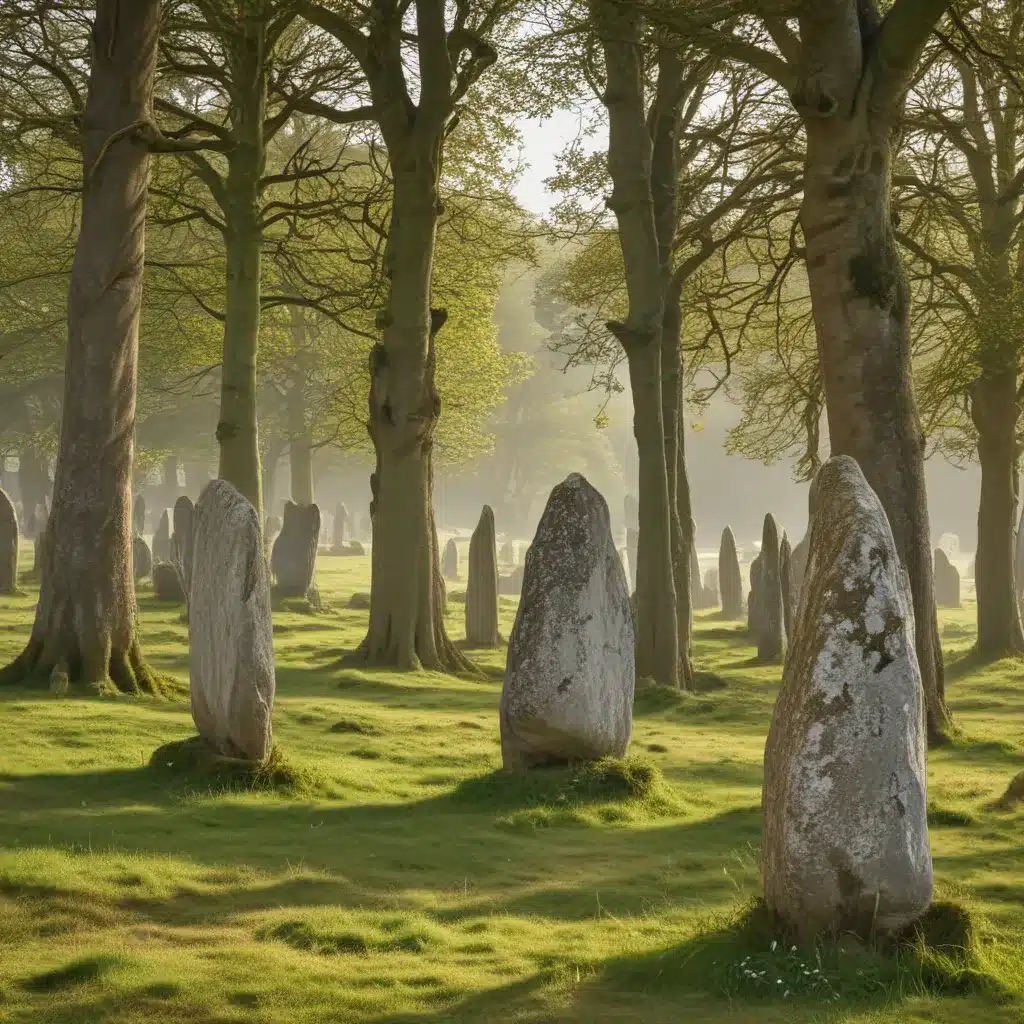
Communing with Monoliths of the Scottish Highlands
The remote, windswept islands and rugged hills of the Scottish Highlands harbor some of the most enigmatic and awe-inspiring ancient monuments in the world. Stretching back thousands of years, these towering stone circles and solitary standing stones have long captivated the imagination of visitors, myself included.
My first glimpse of the Callanish Standing Stones on the Isle of Lewis was a moment I’ll never forget. As I crested the hill, there they stood – a ring of massive, weathered monoliths silhouetted against the moody, grey sky. It was as if I had stepped back in time, transported to an era when these stones were the focal point of ritual and ceremony for the island’s Neolithic inhabitants.
The Callanish stones are believed to date back to around 2200 BC, when the people of this remote Scottish isle carefully selected and moved these multi-ton blocks of quartz and hornblende across the land to erect them on a hilltop overlooking the lochs and mountains. Archaeologists suspect they were aligned with lunar cycles, serving as an ancient astronomical observatory. But the true purpose of these enigmatic stones remains shrouded in mystery, open to endless speculation and imagination.
Channeling the Ancients at Callanish
As I wandered amongst the Callanish stones, running my hands over their craggy surfaces, I couldn’t help but wonder about the people who had done the same thousands of years ago. What rituals and ceremonies had taken place here? What did these stones mean to them? The very thought of it sent shivers down my spine.
Laurel Kallenbach describes the allure of these ancient sites perfectly: “Stone circles are at the intersection of myth and reality, so in an age when we seek scientific answers to every conundrum, their mysteries intrigue me.” I couldn’t agree more. There’s an undeniable power and magnetism to these monoliths that transcends time and space, connecting us to our distant ancestors in a profoundly spiritual way.
As the golden light of sunset filtered through the stones, casting long shadows across the grass, I found myself sinking down, my back against one of the weathered pillars. In that quiet, intimate moment, I felt a deep sense of connection – not just to the stones themselves, but to the countless generations who had done the same, seeking solace and communion with the sacred. It was a humbling and transformative experience, one that left an indelible mark on my soul.
Exploring Scotland’s Prehistoric Landscape
The Callanish stones are just one of many awe-inspiring ancient monuments dotting the Scottish Highlands. From the dramatic Ring of Brodgar in Orkney to the serene Clava Cairns near Inverness, this rugged and mystical land is a veritable treasure trove for anyone fascinated by prehistory.
Other notable sites include the standing stones of Stenness, part of the Heart of Neolithic Orkney UNESCO World Heritage Site, and the sprawling Kilmartin Glen on the west coast, home to over 350 ancient monuments spanning 5,000 years of history. Each of these places has its own unique character and storied past, waiting to be explored and experienced.
Whether you’re drawn to the moody, atmospheric vibe of Callanish or the epic grandeur of the Ring of Brodgar, the ancient stone circles and standing stones of the Scottish Highlands have a way of captivating the senses and stirring the soul. And with so many sites to discover, there’s no better place to immerse yourself in the mystique of our prehistoric past than right here in this rugged and otherworldly corner of the world.
So why not plan your own journey of discovery? Head to Loch Ness Shores, our family-run campsite in the heart of the Scottish Highlands, and use it as a launchpad to explore these awe-inspiring ancient wonders. Who knows what secrets and connections you might uncover along the way?

